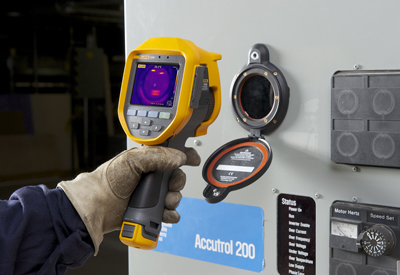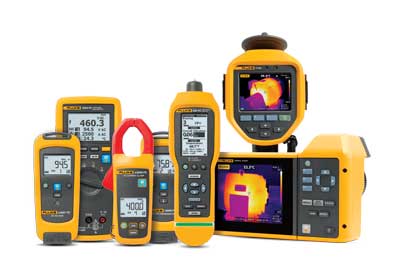Arc électrique : Facteurs clé pour maintenir la sécurité

Quand un défaut d’arc se produit, il en résulte une explosion électrique importante. La lumière et la chaleur émises par l’explosion sont connues comme l’arc électrique et l’onde de pression est connue comme l’explosion de l’arc. Un arc électrique libère des gaz chauds et des concentrés d’énergie rayonnante jusqu’à quatre fois la température de la surface du soleil, qui peut faire fondre le métal et causer des brûlures graves, endommager la vue et entraîner le décès. Les ondes de pression d’accompagnement peuvent endommager l’ouïe ou de la fonction cérébrale et envoyer du matériel en vrac, des outils, des machines et des débris qui volent peuvent causer d’autres blessures. Même si un jet d’arc ne blesse pas une personne, il va endommager l’équipement et provoquer des temps d’arrêt.
Une des principales causes est la tension transitoire (pointes) résultant de la commutation de charges réactives ou de la foudre. L’arc provoqué par la tension transitoire peut durer seulement quelques microsecondes, mais il peut aussi transporter des milliers d’ampères d’énergie. Lorsque ces pointes se produisent alors que les mesures sont prises, ils peuvent provoquer la formation d’un arc au plasma à l’intérieur de l’outil de mesure ou dans l’air extérieur.

Top causes of arc flash and blast
One of the major causes is voltage transients (spikes) resulting from switching reactive loads or lightning strikes. The transient may last only microseconds, but it may also carry thousands of amps of energy. When such spikes occur while measurements are being made, they can cause a plasma arc to form — inside the measurement tool, or in the air outside. Other major causes of arc flash are things as simple as touching a test probe to the wrong surface, worn connections, gaps in the insulation, improperly installed parts, or dust and corrosion that cause resistance heating.
Top 7 arc flash safety measures
To limit the exposure of workers to the risk of arc flash:
1. Train on safe work practices
2. De-energize equipment before accessing
3. Perform regular preventive maintenance
4. Wear arc-rated personal protective equipment (PPE)
5. Select test tools rated for the environment
6. Use remote display or wireless test tools
7. Install infrared windows for switchgear inspection
The National Fire Protection Association (NFPA) 70E: Standards for Electrical Safety in the Workplace provides the most comprehensive guidance for protecting workers from electric shock and arc flash hazards. The 2015 edition added several new provisions including strengthening electrical safety programs, new test instrument and PPE requirements, expanded training requirements, and redefinition of what constitutes a “Qualified Person” permitted to work in areas where there are exposed energized conductors and circuit components of greater than 50 volts.
1. Train on safe work practices
NFPA specifies that all qualified and unqualified employees persons who work in areas who may be potentially exposed to electrical hazards are present must undergo training to:
• Identify and avoid electrical hazards
• Follow safe work practices such as, proper lockout/tagout procedures, maintaining, hazard boundaries, and abiding by PPE requirements
• Understand emergency procedures
Qualified persons must have additional training on electrical equipment and power systems, to the point where they can demonstrate skills and knowledge of how the system is constructed, its manufacturer recommendations and associated hazards.
Qualified persons must also receive training in:
• how to select the correct test instrument, how to inspect it, how to safely use it, what its limitations of use are and interpret the indications
• skills and techniques to test for the presence and absence of voltage
• skills and techniques to determine nominal (phase-to-phase) voltage of the electrical power system
• safe approach distances for electrical shock and arc flash
• perform safety job planning
• assess the risk associated with a specific job task
• select the appropriate methods from a hierarchy of controls, including ppe
• safety-related work practices and procedures to allow them to perform the job task safely
• how to identify and understand the relationship between electrical hazards and injury
2. De-energize equipment before accessing
1. Inspect your test tools and verify them with a known voltage source.
2. Put on the appropriate PPE for the electrical environment.*
3. De-energize and lockout/tagout the equipment.
4. Test for absence of voltage
5. Repeat the meter verification test.
*Until electrical circuits are tested and found absent of voltage, they must be considered energized.
3. Perform regular preventive maintenance
Accidents happen… but some causes of arc flash can be prevented by regularly inspecting electrical distribution equipment. During the inspection, pay specific attention to the early signs of physical failures that are known contributors to arc flash. Repeat the inspection on a regular basis, using a smart phone app such as Fluke Connect® or other portable means to both manage the list of critical components to inspect as well as keep previous/baseline readings field-accessible for the inspection team to compare against. Knowing the health and history of the equipment in your facility is the first step to preventing arc flash. The key to being able to identify an abnormal reading is to gather baseline readings for especially important components and equipment. Critical components for arc flash safety include:
Electrical connections: Use a thermal imager to scan energized components to quickly identify abnormally hot, loose connectors that can signal a variety of potential electrical failures from a safe distance. Make sure to follow all PPE requirements for the full arc flash assessment when opening and closing the door. Follow thermography-specific NFPA 70E PPE guidelines during the infrared inspection, including the distance to maintain from the panel as well as the personal safety gear to use.
Insulation: Test transformer windings, motor windings, and connecting cables with an insulation tester to check the integrity of the cable insulation or motor windings. Low insulation resistance readings may indicate that the cable is breaking down, potentially causing a short. This inspection can prevent premature equipment failure.
Circuit breakers: Proper testing of circuit breakers requires special equipment and specialized expertise. The breakers need to be removed from the circuit and tested to verify the trip current and delay.
4. Wear arc rated PPE within arc flash danger zone
Wearing the proper PPE in conjunction with the other safety measures is critical to minimizing injury in the event of an arc flash incident. In order for the PPE to perform effectively, its arc thermal performance rating must meet—or exceed—the thermal energy transfer during the arc flash incident. The best way to predict the thermal energy transfer, or incident energy, is through an arc flash hazard analysis. Then select PPE clothing and accessories based on performance rating predicted energy exposure NFPA 70E Table 130.7(C)(16).
Personal protective equipment categories
Always abide by the limits of use and minimum working distance. The following PPE categories are described by the National Fire Protection Association (NFPA) Standard 70E. The greater the electrical hazard, the higher the personal protective equipment arc rating must be to withstand an arc-flash incident.










